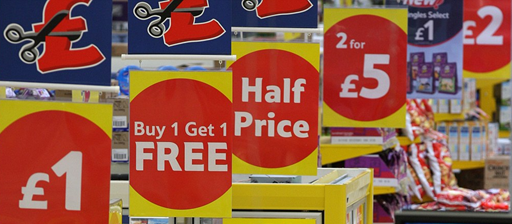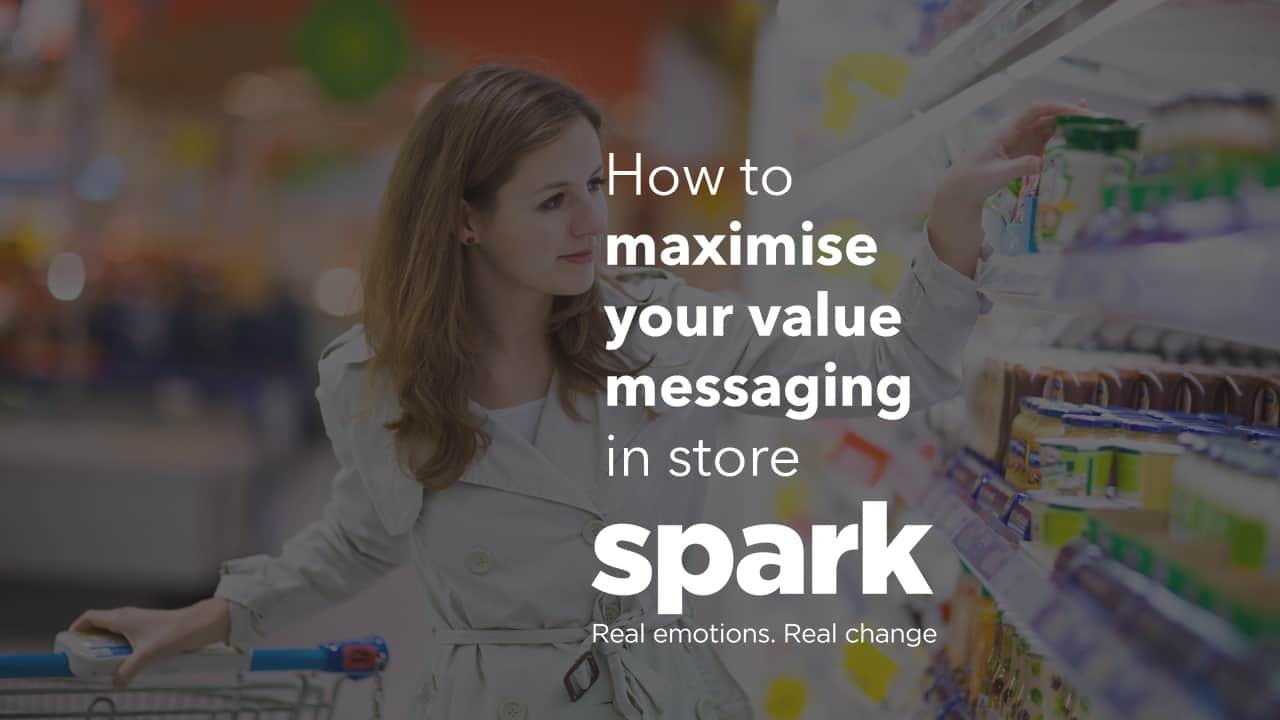Whilst value messaging can be instrumental in increasing product engagement and sales in store, if executed poorly, it can also be detrimental to these components. Fortunately, there are some simple rules and techniques, embedded in behavioural psychology, that can be adopted to ensure maximum output is achieved from the correct promotion.
There is an infinite variety of options to choose from when selecting a type of offer to implement, but decades of research have helped establish those which are most effective is which scenarios. Our own research conducted back in 2013 in the supermarket channel found that BOGOF offers were the most successful in attracting initial engagement, driving visits and evaluations, and driving sales (3 times more likely than of an unpromoted alternative). Whereas offers such as “percentage free (extra product)”, “Multibuys”, and “Introductory offers” were actually found to have adverse effects on the success of a product (when compared to non-promoted items). However, this does not mean every brand should always opt for BOGOF offers.
External factors can change the success of a promotion
A number of external components can also influence the success of a promotion, such as the volume of that particular of offer. When Multibuys were looked at by retailer, the resultant shopper behaviour varied significantly. In Asda, multibuys accounted for more than 60% of all special offers, and in Tesco, multibuys represented a huge 78% of all promotional activity, whereas, in Sainsbury’s just 23% of offers were Multibuys. We found Sainsbury’s performed significantly better in terms of this particular promotion, suggesting a direct correlation between the volume of offers and their effectiveness.

The category plays a role
Category differences are another important consideration when assigning promotion types. For example, when looking at a bundle offer, you should consider whether the item is utilitarian (functional) or hedonic (pleasurable), as framing discounts on hedonic items ‘provides the justification required to reduce the guilt of the purchase’. Similarly, the expense of a product should play a role, for example, we should avoid bundling expensive and inexpensive products, as inexpensive products can reduce the perceived value of an expensive product.
Understanding processing fluency is key
As well as choosing the right promotions for the right products, it is also vital to choose the right numbers, colours, sizes, and language. Processing fluency is key, and it is important to provide the optimal amount of cognitive challenge in order for an offer to be attractive to a shopper. For example, while a ‘50% off’ offer and a ‘½ price’ offer are ultimately providing exactly the same discount, they can significantly diverge in terms of their effectiveness based on various interpretations resulting in differing purchasing behaviour. This is all down to human cognition and how our brains respond to different information.

So which one is best?
It is therefore vital to test different promotional concepts, applying different combinations of the aforementioned factors in order to ensure the most effective format of value messaging is applied. Concept testing can be really simple way to not only establish what works best for a specific category in terms of promotion, but also to measure human behaviour, and how shoppers interact and engage differently with different categories.
How can we help?
Here at Spark Emotions, our foundation of expertise in both psychology and industry, combined with our emotional wheel tool which allows us to gauge exactly how shoppers feel, puts us in a position where we are able to gain an incredibly accurate view of how consumers respond to different components in their shopper journey. This allows us to establish what works best in ultimately providing the optimum experience for the shopper and driving business growth.
If you would like to understand how we can help you maximise your value messaging, get in touch below.

Written by Holly Adams, Research Manager at Spark Emotions.
If you have any questions, feel free to reach out to Tara via email holly.adams@sparkemotions.com or connect with her on LinkedIn






